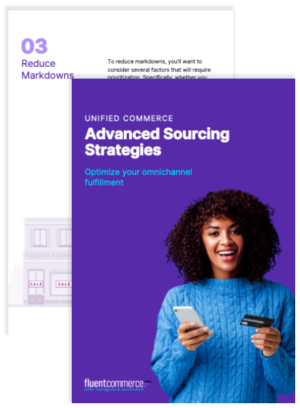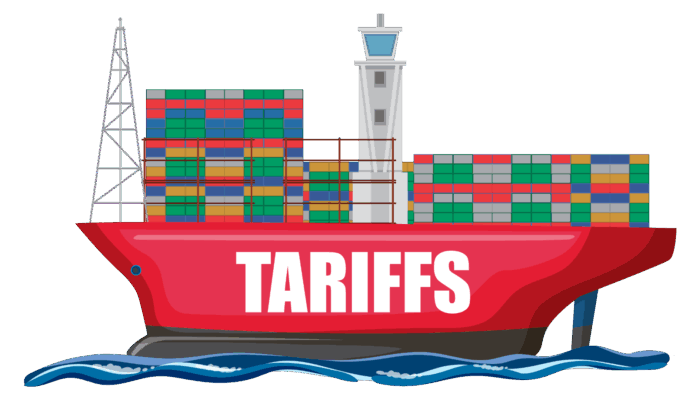The pandemic has changed how we live and shop. With eCommerce demand at an all-time high, delivery has become even more important to the consumer experience.
This means, carriers are more essential than ever. But as we explored in an article on NRF 2021: Personal shoppers, store fulfillment, and delivery diversification many retailers have experienced delivery challenges, such as:
- Carrier delays – due to the surge in demand
- Delivery costs – both price increases and higher holiday surcharges
- Reaching the limits of their order processing capacity – due to illness, the impact of new safety protocols, or lockdowns
To ensure resilience, retailers need to diversify their delivery strategy. Here are 5 ways to make sure carriers aren’t the weak link in your customers’ experience.
1. Kiss single-sourcing goodbye
Typically, if you place all your delivery volume with a single carrier they’ll offer better rates than if you use multiple carriers. However, if that carrier is short on capacity, it can put your customer experience at risk. In 2020, when many national carriers started to impose volume limits, retailers were stuck. The result? A big upswing in demand for regional carriers to fill the void. The days of single sourcing are over.
What’s more, a multi-carrier model lets you expand the number of delivery options available to your customers. This may include faster or cheaper options (particularly for expedited delivery) to improve the customer experience.
2. Evaluate the use of regional carriers
Regional carriers don’t always make sense. If you only have one Distribution Center, sell lightweight items like apparel, and need to support international shipping, working with big national carriers may be the best option. But if you move a lot of volume in a particular region, it’s worth doing the math. Especially if you ship bulky or fragile items. In fact regional carriers can save you from 10% to 40%.
In addition, regional carriers may offer better frequency and transit times than a national carrier. Moreover, they may offer daily and weekend shipments and even same-day delivery, which might not be matched by national providers.
3. Consider a carrier aggregator
The challenge with a multi-carriers approach is how to select the best option in real-time. That’s where carrier or shipping aggregators come in—companies like U.K. based Metapack, U.S. based ProShip, and ShippIt in Australia. An aggregator lets you validate which carriers can service an order using a single call during the shopping experience, rather than separate calls to each individual carrier. This saves time and reduces page load speeds. The aggregator confirms which carrier(s) can service the ‘origin to destination’ route, and responds with transit times, carrier rates and rules, so you can provide customers with the fastest, most convenient options. In the case of free delivery, it also lets you maximize the margin on each order.
4. Use your own fleet
For some retailers and brands—particularly those with stores—it may make sense to build and operate your own fleet of drivers to deliver locally. For example, store staff. While this may require new processes and extra training, you’ll have a lot more control and the opportunity to provide a truly branded delivery experience. If you go down this route, consider using a solution like Bringg to help manage fleet capacity and driver efficiency.
5. It’s 2022 – try crowdsourcing
For brands that operate in urban areas, crowdsourcing is a great option. It has extra benefits too. Not only can you offer fast convenient delivery, but outsource your pick and pack as well. Let’s take a look at the new wave of delivery options:
- Personal Shoppers – Think Instacart and Shipt (now owned by Target) in the U.S. While personal shopping services have traditionally focused on grocery, they’re expanding fast. Instacart now has relationships with many non-grocery retailers from Bed Bath & Beyond, Best Buy, Big Lots!, Petco to CVS Pharmacy and Walgreens.
- Crowdsourced Drivers – Think DoorDash (used by Macy’s), and Uber Direct. It’s the same model as regular Uber and Lyft, except drivers pickup packages and deliver them rather than carrying passengers. For eco-conscious brands Uber Direct also offers delivery by electric vehicle.
- Public transit passengers and cyclists – Looking for the ultimate in sustainable urban delivery whilst still offering same-day services? Look no further than Urb-It. They offer crowdsourced delivery via bicycle or public transit so it’s even better for the planet.
What’s the role of order management in all this?
We often get asked the question, where does order management fit in a multi-carrier strategy?
Your Order Management System (OMS) is the brains behind your sourcing. Firstly, it keeps track of what stock you have available, and where, in real-time. Secondly, it uses your business logic to determine the optimal fulfillment location. Then, using data from a carrier aggregator or a carrier directly, returns the best carrier service(s) to deliver the order to the customer.
Once the order has been placed, your OMS manages the overall fulfillment process which, depending on your business, may include:
- Triggering customer notifications
- Manual fraud checks
- Value added services
- Tracking order status
- In-store pick and pack
- Exception management
Once the order has been handed off to the carrier, the OMS can consume tracking updates and share that data with your other systems.
Remember that your carrier represents your brand
In the omnichannel world consumers don’t think of shopping and delivery as separate. They are both part of a unified commerce experience. In fact, over half of consumers surveyed in 2020 hold the retailer or brand responsible for delivery issues, not the carrier. To that end, it’s important to remember that the carrier, and their ability to deliver on time, can have a huge impact on your brand. So make sure that your delivery strategy enables you to validate delivery before the buy button. That way you can make accurate promises to customers and increase brand loyalty.
To learn more about how Fluent Order Management can help you optimize your omnichannel fulfillment, Request a Demo today.




